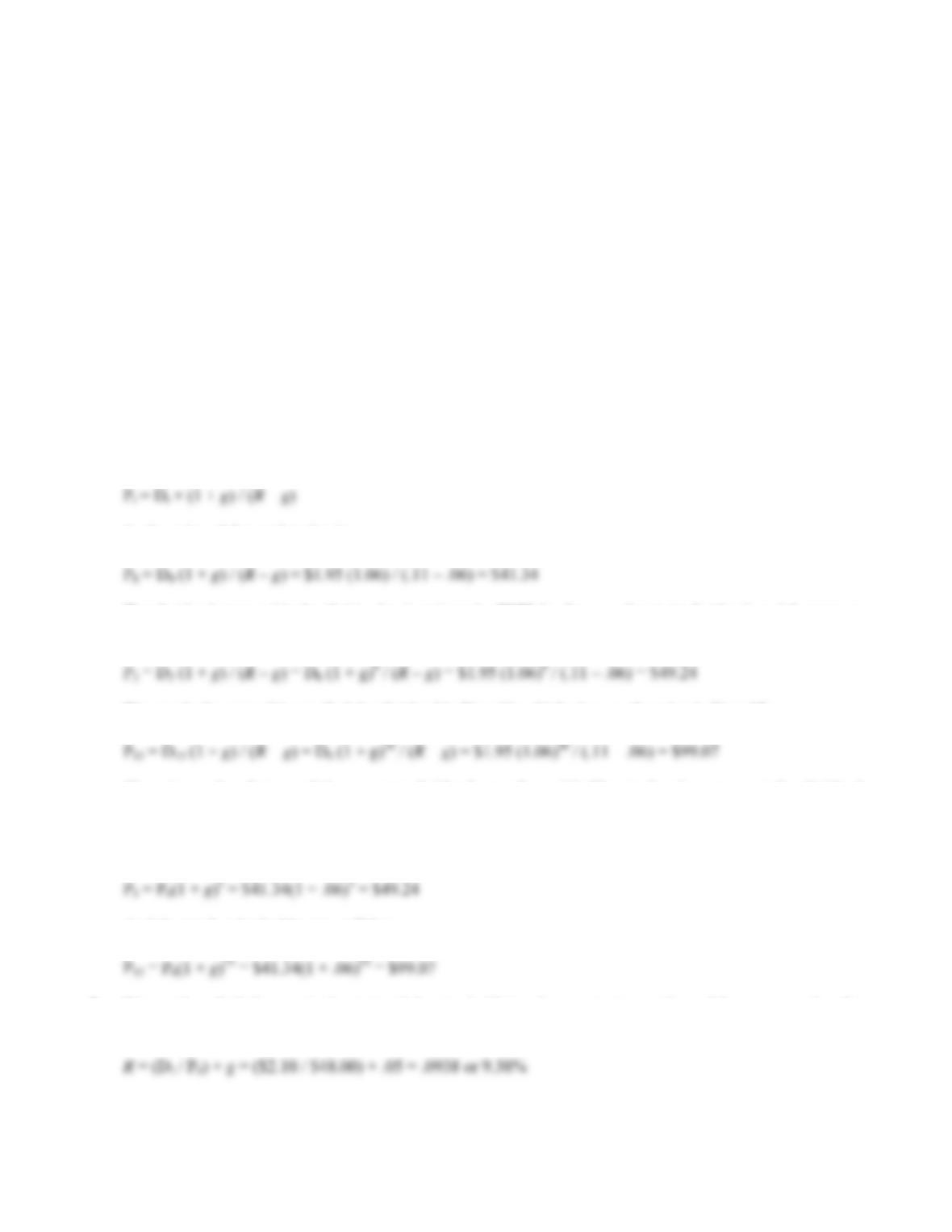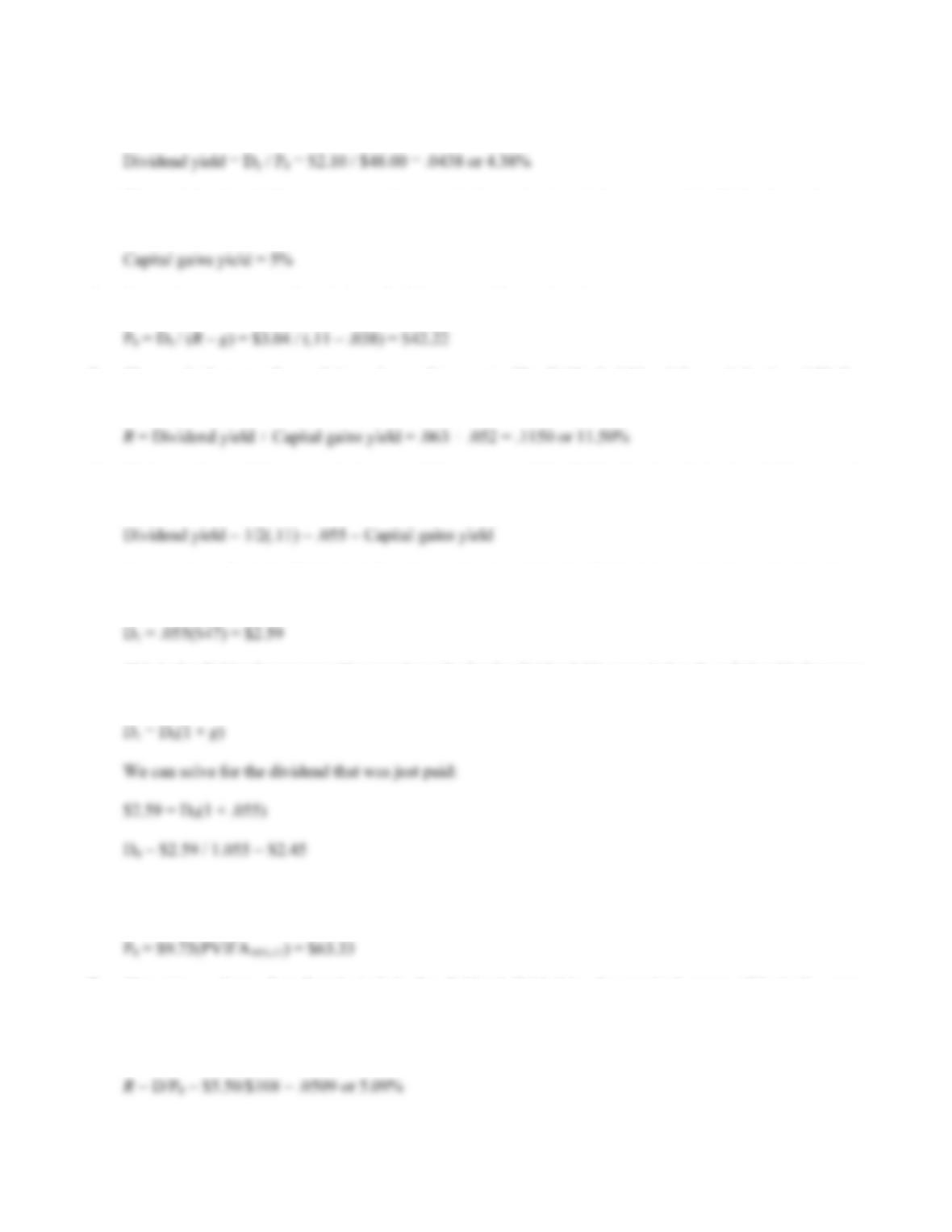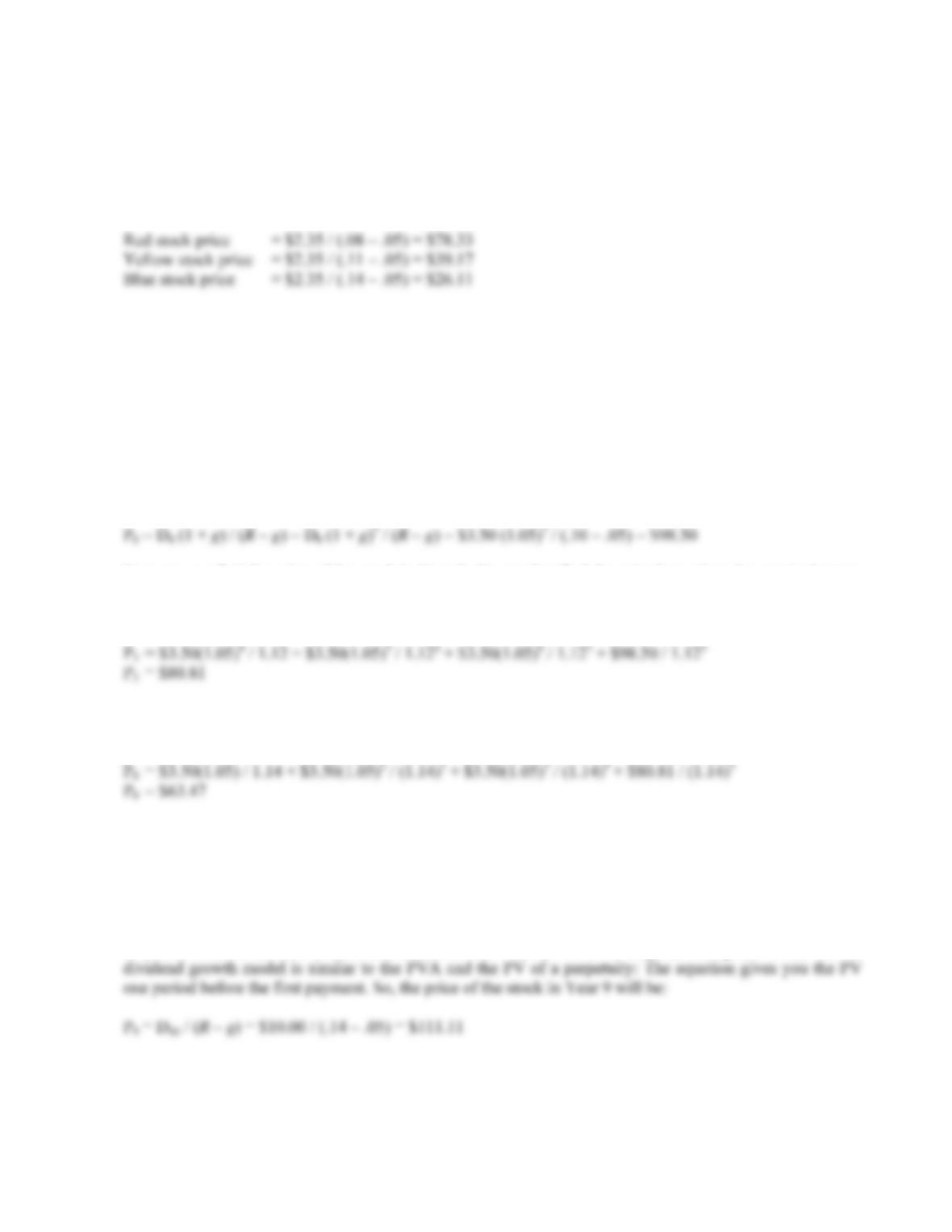B-142 SOLUTIONS
11. Presumably, the current stock value reflects the risk, timing and magnitude of all future cash flows, both
short-term and long-term. If this is correct, then the statement is false.
12. If this assumption is violated, the two-stage dividend growth model is not valid. In other words, the price
calculated will not be correct. Depending on the stock, it may be more reasonable to assume that the
dividends fall from the high growth rate to the low perpetual growth rate over a period of years, rather than
in one year.
Solutions to Questions and Problems
NOTE: All end of chapter problems were solved using a spreadsheet. Many problems require multiple steps.
Due to space and readability constraints, when these intermediate steps are included in this solutions manual,
rounding may appear to have occurred. However, the final answer for each problem is found without rounding
during any step in the problem.
Basic
1. The constant dividend growth model is:
So the price of the stock today is:
The dividend at year 4 is the dividend today times the FVIF for the growth rate in dividends and four years,
so:
We can do the same thing to find the dividend in Year 16, which gives us the price in Year 15, so:
There is another feature of the constant dividend growth model: The stock price grows at the dividend
growth rate. So, if we know the stock price today, we can find the future value for any time in the future we
want to calculate the stock price. In this problem, we want to know the stock price in three years, and we
have already calculated the stock price today. The stock price in three years will be:
And the stock price in 15 years will be:
2. We need to find the required return of the stock. Using the constant growth model, we can solve the
equation for R. Doing so, we find:





